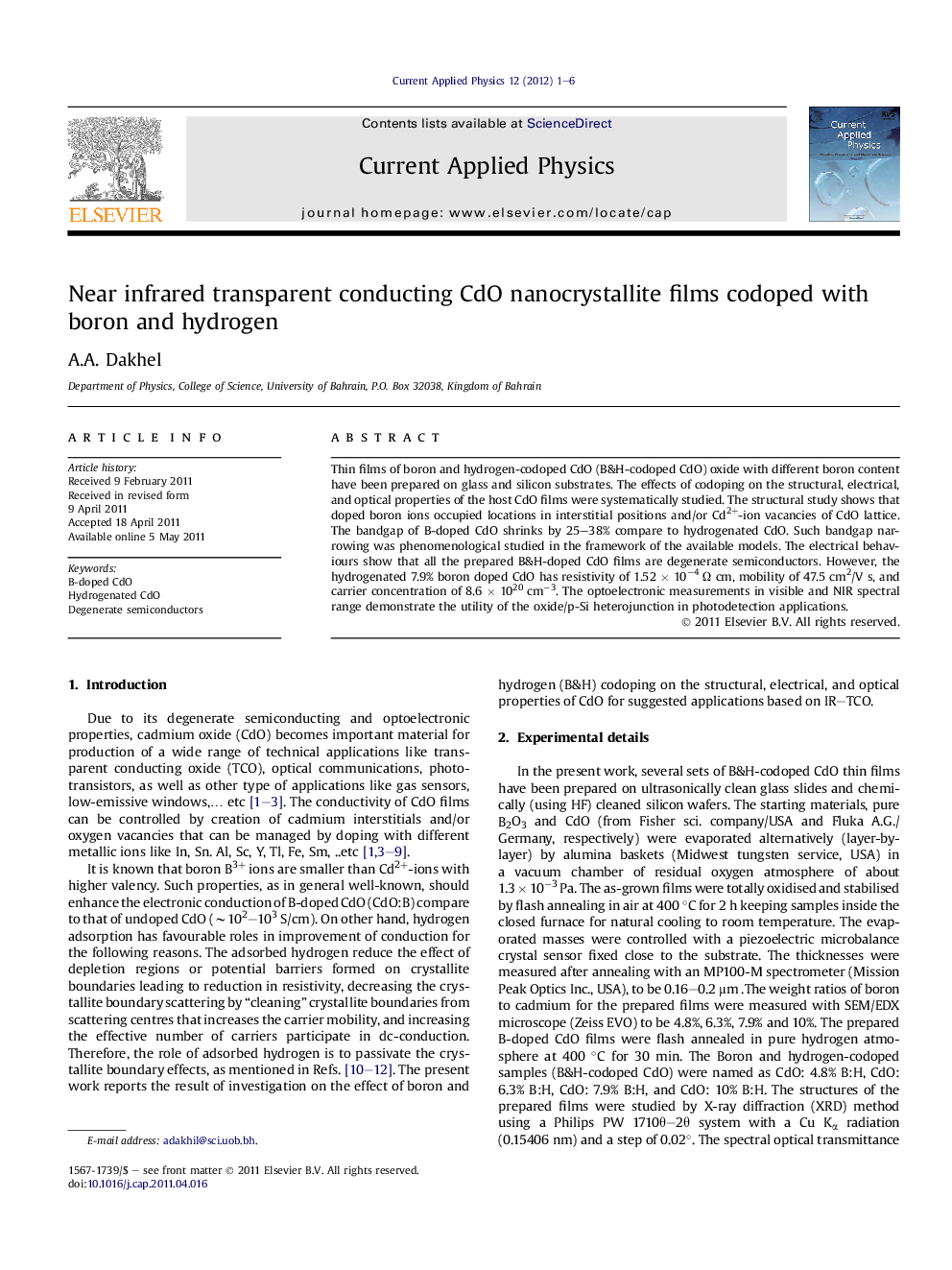| Article ID | Journal | Published Year | Pages | File Type |
|---|---|---|---|---|
| 1786988 | Current Applied Physics | 2012 | 6 Pages |
Thin films of boron and hydrogen-codoped CdO (B&H-codoped CdO) oxide with different boron content have been prepared on glass and silicon substrates. The effects of codoping on the structural, electrical, and optical properties of the host CdO films were systematically studied. The structural study shows that doped boron ions occupied locations in interstitial positions and/or Cd2+-ion vacancies of CdO lattice. The bandgap of B-doped CdO shrinks by 25–38% compare to hydrogenated CdO. Such bandgap narrowing was phenomenological studied in the framework of the available models. The electrical behaviours show that all the prepared B&H-doped CdO films are degenerate semiconductors. However, the hydrogenated 7.9% boron doped CdO has resistivity of 1.52 × 10−4 Ω cm, mobility of 47.5 cm2/V s, and carrier concentration of 8.6 × 1020 cm−3. The optoelectronic measurements in visible and NIR spectral range demonstrate the utility of the oxide/p-Si heterojunction in photodetection applications.
► The investigation of CdO films codoped with B3+ and hydrogen ions shows bandgap shrinking by 25–28%. ► The utmost conduction parameters improvement takes place with 7.9 wt% boron doping. ► The conductivity increases by 46 times, mobility 5.6 times and electronic concentration 8 times compare to H-doped CdO film. ► With 6–8% boron doping, largest carrier mobility (39–47 cm2/V s) was obtained.
